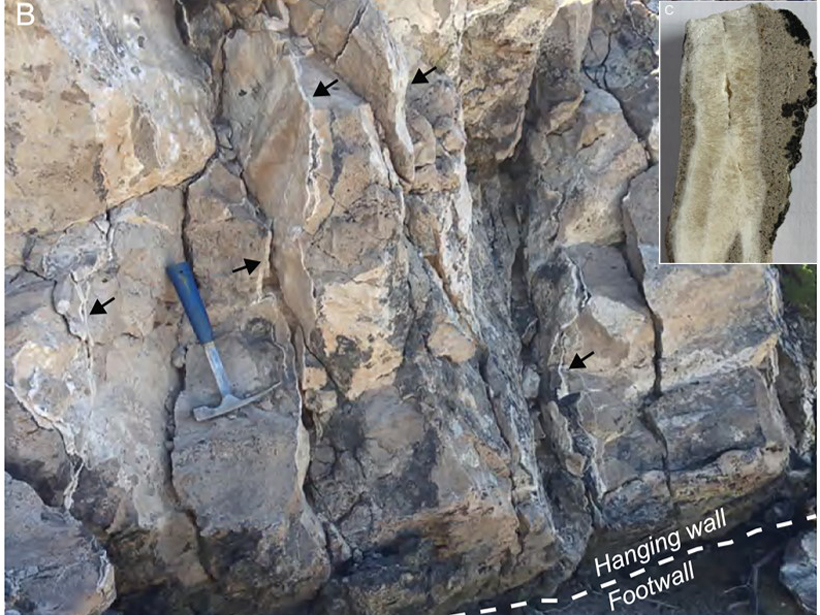Source: Geophysical Research Letters
The growth and coalescence of fractures in fault zones influences the mechanical properties of fault rock, including stiffness and strength. Following earthquake ruptures, a network of fractures increases local permeability, which leads to fluid flow, mineral growth within fractures, and the return of some strength to the fault zone during interseismic periods. The rates of such mineralization, or “healing” of faults, have however been elusive, and could be limited by rates of fluid flow or precipitation.
Williams et al. [2019] used U-Th dating of syntectonic calcite veins in the Loma Blanca fault, New Mexico, USA, to establish the rates of fracture cementation and healing. For meter-to-decimeter scale fracture networks, calcite growth rates range by an order of magnitude and correlate strongly with fracture width, where the fastest growth rates of about one millimeter per thousand years are observed in fractures about one centimeter wide.
This correlation suggests calcite growth and fracture healing are likely fluid transport limited in faults, and that fracture healing rates are highly variable both within and between individual fractures through time. These variabilities suggest that fracture widths and associated fluid flow pathways control the spatial distribution of fault-zone healing following earthquakes.
Citation: Williams, R. T., Mozley, P. S., Sharp, W. D., & Goodwin, L. B. [2019] U‐Th Dating of Syntectonic Calcite Veins Reveals the Dynamic Nature of Fracture Cementation and Healing in Faults. Geophysical Research Letters, 46. https://doi.org/10.1029/2019GL085403
—Steven D. Jacobsen, Editor, Geophysical Research Letters
Text © 2019. The authors. CC BY-NC-ND 3.0
Except where otherwise noted, images are subject to copyright. Any reuse without express permission from the copyright owner is prohibited.

